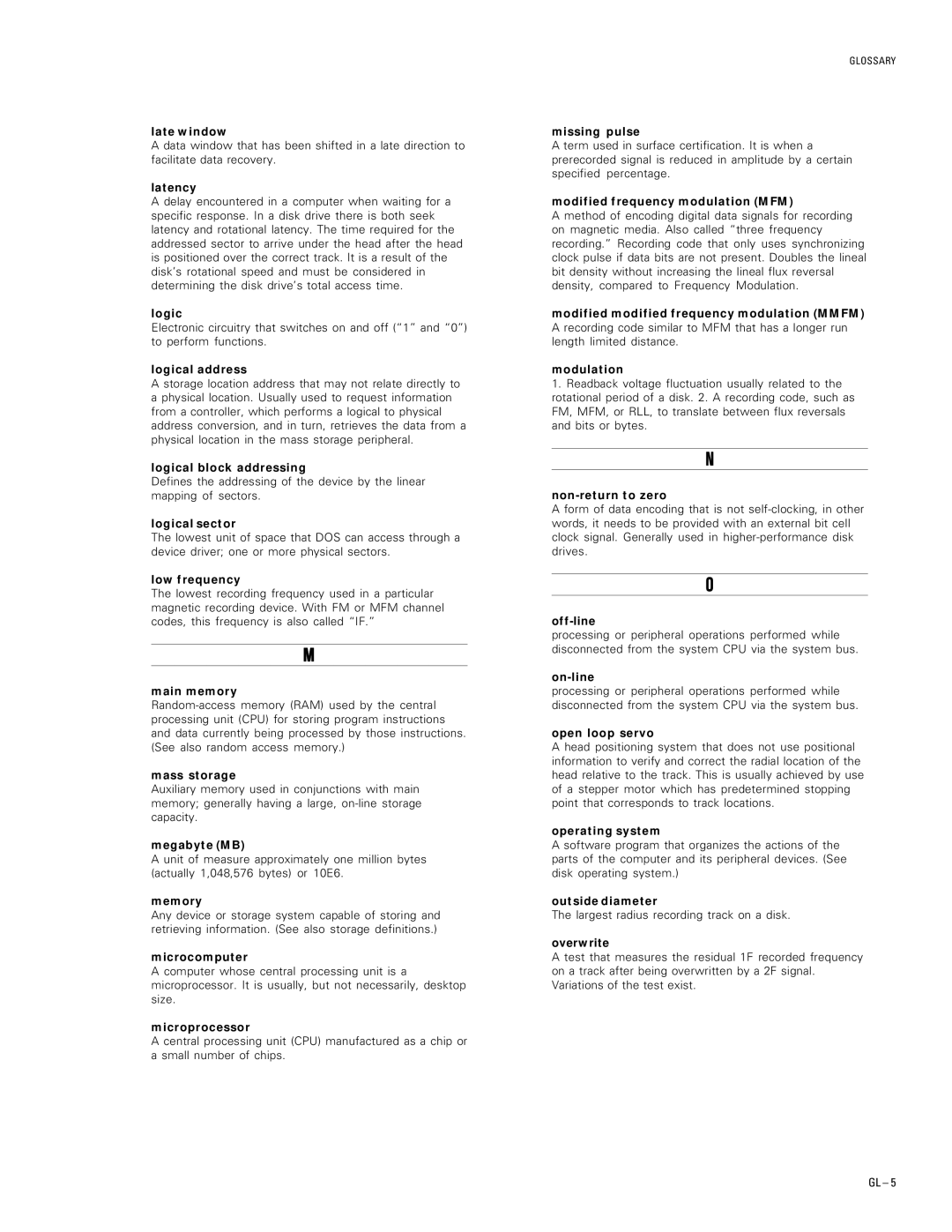
late window
A data window that has been shifted in a late direction to facilitate data recovery.
latency
A delay encountered in a computer when waiting for a specific response. In a disk drive there is both seek latency and rotational latency. The time required for the addressed sector to arrive under the head after the head is positioned over the correct track. It is a result of the disk’s rotational speed and must be considered in determining the disk drive’s total access time.
logic
Electronic circuitry that switches on and off (“1” and “0”) to perform functions.
logical address
A storage location address that may not relate directly to a physical location. Usually used to request information from a controller, which performs a logical to physical address conversion, and in turn, retrieves the data from a physical location in the mass storage peripheral.
logical block addressing
Defines the addressing of the device by the linear mapping of sectors.
logical sector
The lowest unit of space that DOS can access through a device driver; one or more physical sectors.
low frequency
The lowest recording frequency used in a particular magnetic recording device. With FM or MFM channel codes, this frequency is also called “IF.”
M
main memory
mass storage
Auxiliary memory used in conjunctions with main memory; generally having a large,
megabyte (MB)
A unit of measure approximately one million bytes (actually 1,048,576 bytes) or 10E6.
memory
Any device or storage system capable of storing and retrieving information. (See also storage definitions.)
microcomputer
A computer whose central processing unit is a microprocessor. It is usually, but not necessarily, desktop size.
microprocessor
A central processing unit (CPU) manufactured as a chip or a small number of chips.
GLOSSARY
missing pulse
A term used in surface certification. It is when a prerecorded signal is reduced in amplitude by a certain specified percentage.
modified frequency modulation (MFM)
A method of encoding digital data signals for recording on magnetic media. Also called “three frequency recording.” Recording code that only uses synchronizing clock pulse if data bits are not present. Doubles the lineal bit density without increasing the lineal flux reversal density, compared to Frequency Modulation.
modified modified frequency modulation (MMFM) A recording code similar to MFM that has a longer run length limited distance.
modulation
1.Readback voltage fluctuation usually related to the rotational period of a disk. 2. A recording code, such as FM, MFM, or RLL, to translate between flux reversals and bits or bytes.
N
non-return to zero
A form of data encoding that is not
O
off-line
processing or peripheral operations performed while disconnected from the system CPU via the system bus.
on-line
processing or peripheral operations performed while disconnected from the system CPU via the system bus.
open loop servo
A head positioning system that does not use positional information to verify and correct the radial location of the head relative to the track. This is usually achieved by use of a stepper motor which has predetermined stopping point that corresponds to track locations.
operating system
A software program that organizes the actions of the parts of the computer and its peripheral devices. (See disk operating system.)
outside diameter
The largest radius recording track on a disk.
overwrite
A test that measures the residual 1F recorded frequency on a track after being overwritten by a 2F signal. Variations of the test exist.
GL – 5
